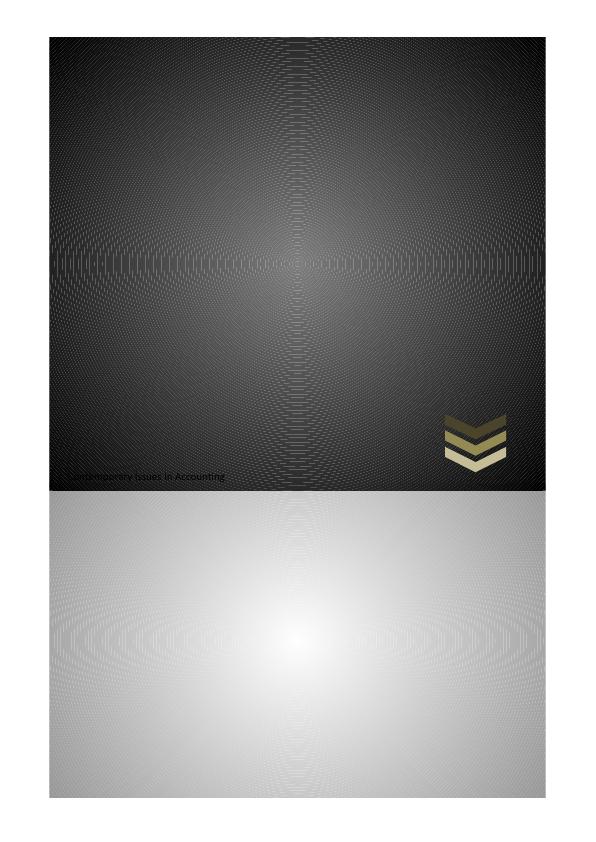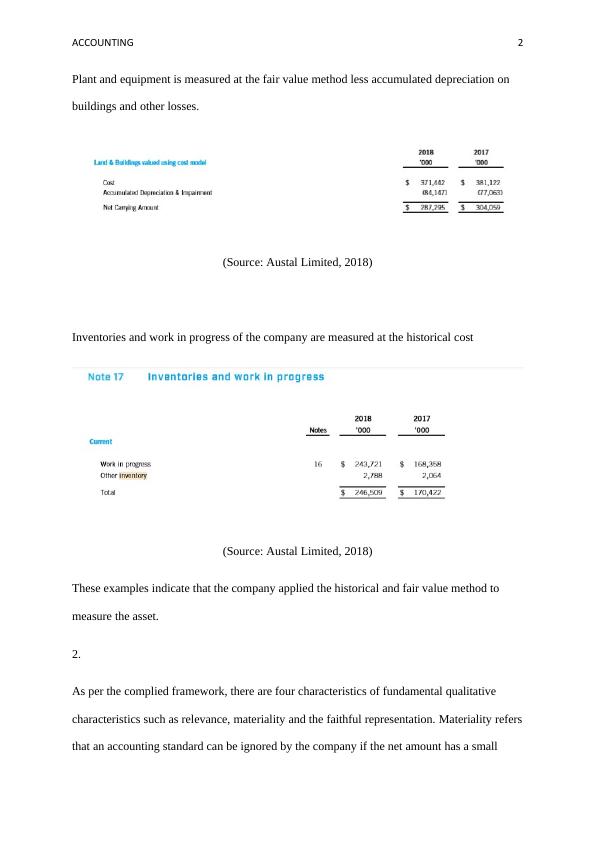Conceptual Framework for Financial Accounting and Reporting
This is a compiled framework for the preparation and presentation of financial statements. It applies to annual reporting periods beginning on or after 1 July 2014 and incorporates relevant amendments made up to and including 4 June 2014. The compiled framework is available on the AASB website.
8 Pages1836 Words86 Views
Added on 2023-01-16
About This Document
This report analyzes the annual reports of Austal Company, focusing on the application of the conceptual framework in financial accounting and reporting. It discusses the measurement requirements and qualitative characteristics used, such as historical cost and fair value method. The report also highlights the importance of understanding the financial statements for investors and creditors.
Conceptual Framework for Financial Accounting and Reporting
This is a compiled framework for the preparation and presentation of financial statements. It applies to annual reporting periods beginning on or after 1 July 2014 and incorporates relevant amendments made up to and including 4 June 2014. The compiled framework is available on the AASB website.
Added on 2023-01-16
ShareRelated Documents
End of preview
Want to access all the pages? Upload your documents or become a member.
Contemporary Issues in Accounting
|8
|1587
|84
Contemporary Issues In Accounting
|9
|1846
|85
Evaluation of Abilene Oil and Gas Ltd Annual Report for Compliance with Conceptual Framework of Accounting
|7
|1426
|190
Contemporary Issues in Accounting
|22
|2407
|97
Contemporary Issues in Accounting
|19
|2542
|35
Contemporary Issues in Accounting
|12
|1988
|35



